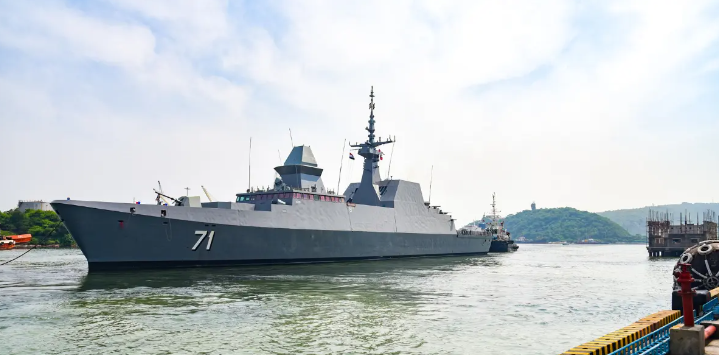SIMBEX 2024 (GS Paper 3, Defence)

Overview
- The 31st edition of the Singapore-India Maritime Bilateral Exercise (SIMBEX) is being conducted from October 23 to 29, 2024, in Visakhapatnam, India.
- This year's exercise involves significant participation from the Republic of Singapore Navy (RSN), marked by the arrival of the RSS Tenacious.
- SIMBEX serves as a key platform for both nations to enhance their maritime capabilities and strengthen their strategic partnership.
Historical Context of SIMBEX
- SIMBEX originated in 1994 as Exercise Lion King.
- Initially focused on basic maritime interactions, it has evolved over the years into a comprehensive exercise that reflects the growing defense ties between India and Singapore.
- The evolution of SIMBEX mirrors the changing dynamics of maritime security in the Asia-Pacific region, where both nations face similar challenges, such as piracy, territorial disputes, and the need for enhanced maritime domain awareness.
Objectives of SIMBEX 2024
The overarching goal of SIMBEX 2024 is to deepen the strategic partnership between India and Singapore. Key objectives include:
- Enhancing Interoperability:
- This involves training both navies to operate together effectively in various maritime scenarios. Interoperability is crucial for joint missions, especially in humanitarian assistance, disaster relief, and security operations.
- Improving Maritime Domain Awareness (MDA):
- MDA is essential for understanding the activities within a nation’s maritime domain. By collaborating on information sharing and surveillance, both navies can better monitor threats and manage maritime resources.
- Addressing Shared Maritime Challenges:
- The exercise fosters cooperative strategies to tackle common threats, including terrorism, piracy, and environmental challenges, which require coordinated responses from multiple nations.
Structure of the Exercise
SIMBEX 2024 is structured into two primary phases:
Harbour Phase (October 23-25):
Conducted in Visakhapatnam, this phase focuses on shore-based activities designed to build rapport and share knowledge. Activities include:
- Subject Matter Expert Exchanges (SMEEs): These are sessions where experts from both navies share insights on best practices and lessons learned in various maritime operations.
- Cross-deck Visits: Personnel from both navies board each other's ships, fostering mutual understanding and camaraderie.
- Sports Fixtures: Friendly sports competitions promote teamwork and build relationships between the personnel of both navies.
- Pre-sail Briefings: These briefings prepare the forces for the subsequent Sea Phase, ensuring that all participants are aligned on objectives and procedures.
Sea Phase (October 28-29):
Taking place in the Bay of Bengal, this phase includes more complex maritime operations. Activities will comprise:
- Advanced Naval Drills: Conducting tactical exercises that simulate real-world scenarios, enhancing operational readiness.
- Live Weapon Firings: Practical demonstrations of weapon systems to ensure proficiency and safety in using naval armaments.
- Anti-Submarine Warfare (ASW) Training: Exercises designed to develop capabilities to detect and neutralize submarine threats, which are increasingly relevant in regional security.
- Anti-Surface and Anti-Air Operations: Conducting drills to counter surface vessels and aerial threats, reinforcing the overall combat readiness of both navies.
- Seamanship Evolutions and Tactical Maneuvers: These practical drills focus on navigational skills and strategic positioning in maritime operations.
Opening Ceremony
The opening ceremony for SIMBEX 2024, scheduled for October 24, will take place onboard INS Shivalik, a key Indian naval vessel. This ceremony will feature dignitaries from both the Indian and Singaporean navies, underscoring the importance of the exercise in promoting defense cooperation.
Importance of SIMBEX
SIMBEX is pivotal for enhancing regional security in the Asia-Pacific region. The collaboration between the Indian Navy and the RSN is significant for several reasons:
- Strengthening Bilateral Ties: Through regular exercises like SIMBEX, India and Singapore reinforce their defense relationships, ensuring that they can collaborate effectively on various maritime challenges.
- Promoting Regional Stability: By engaging in joint exercises, both nations contribute to a stable maritime environment, which is crucial for trade routes and regional security.
- Building Capacity: The training and operational experience gained during these exercises enhance the capabilities of both navies, preparing them to respond to a range of scenarios, from humanitarian crises to combat operations.
Future Prospects
As SIMBEX continues to develop, future exercises are anticipated to include:
- Integration of New Technologies: The evolving nature of maritime threats requires the adoption of cutting-edge technologies. Future exercises may incorporate advanced systems like unmanned aerial vehicles (UAVs), drones, and artificial intelligence to enhance operational effectiveness.
- Expanded Scope of Collaboration: The partnership could evolve to address non-traditional security challenges such as cyber threats, climate change impacts on maritime operations, and humanitarian assistance.
- Joint Development of Tactical Strategies: By working together in various scenarios, both navies can develop effective strategies to address emerging maritime threats, thus enhancing their strategic deterrence capabilities.
Conclusion
- SIMBEX 2024 exemplifies the deepening naval partnership between India and Singapore, highlighting the importance of joint exercises in enhancing maritime capabilities.
- Through collaboration, both nations aim to ensure a secure and stable maritime environment, critical for regional peace and economic prosperity.
- As they continue to navigate the complexities of maritime security, exercises like SIMBEX will play a crucial role in shaping a robust defense framework that addresses both traditional and emerging threats in the region.
- This ongoing commitment to collaboration not only strengthens bilateral ties but also fosters a cooperative security architecture in the Asia-Pacific.


